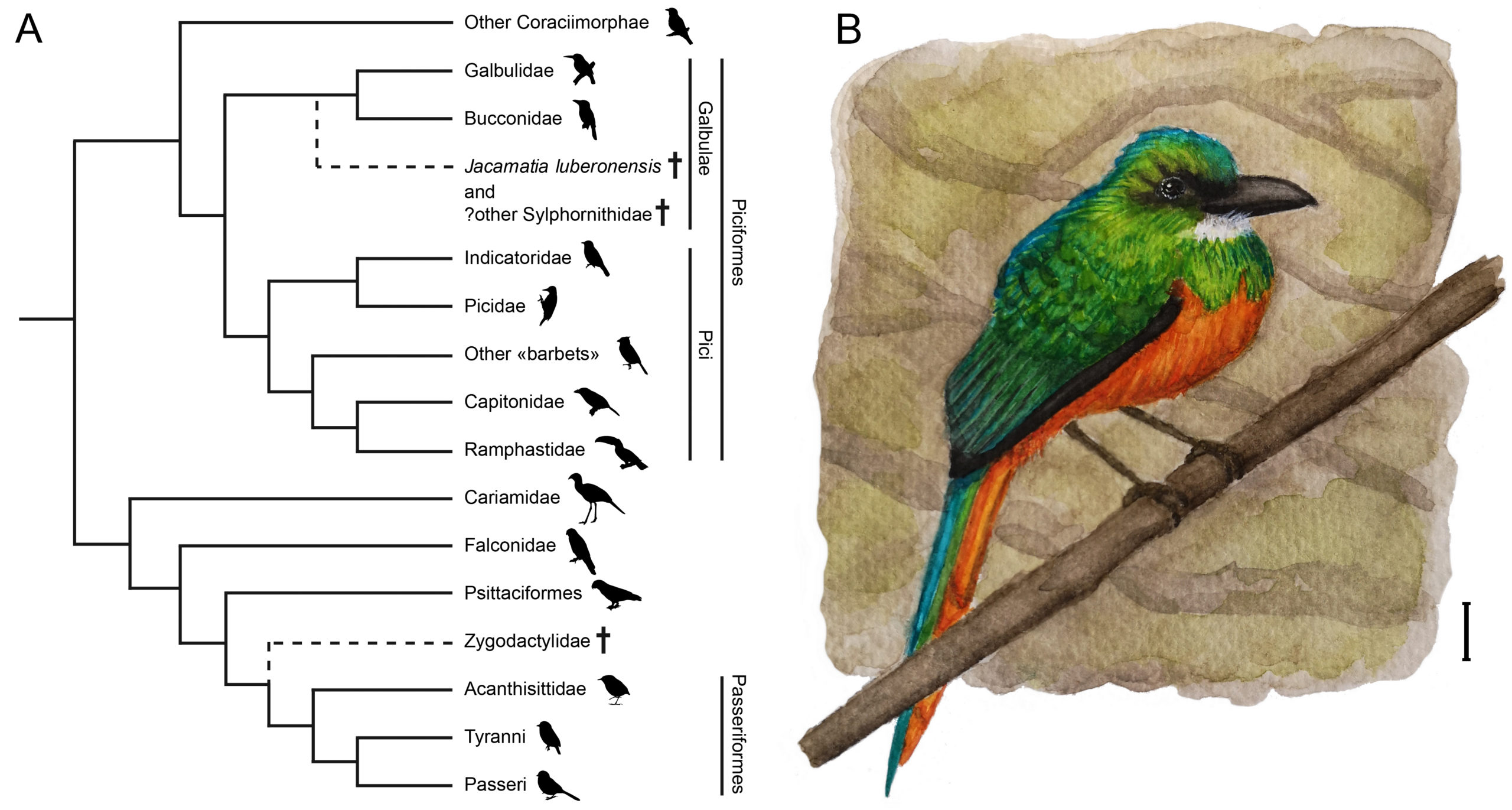By Antoine Louchart
Linked paper: An early Oligocene stem Galbulae (jacamars and puffbirds) from southern France, and the position of the Paleogene family Sylphornithidae by A. Duhamel, C. Balme, S. Legal, S. Riamon, A. Louchart, The Auk: Ornithological Advances.
When the fragment of calcareous plate was unearthed, detached from the strata of early Oligocene age 30 million years ago in sunny Céreste in southeastern France, there was a hint of the presence within it of small fossil bones. They produced gentle but precise reliefs on the plate surface, indicating that the tiny wing bones of a bird were cast in limestone. After days of meticulous preparation with a sewing needle under microscope, the blackish bones appeared in a nice state of preservation. Now our study could begin, with the objective of tracing which group of birds this wing belonged to and whether it could teach us something about the bird communities of that remote period. At this moment, we did not know yet that this little Provencal bird would turn out to be a representative of a family considered exotic according to European standards.
After a number of comparisons with modern bones, we could exclude most bird groups as candidates for the fossil’s identification. Details of the carpometacarpus and the main wing phalanx pointed to a member of Piciformes, the order comprising woodpeckers, toucans, barbets, and honeyguides (Pici) as well as jacamars and puffbirds (Galbulae). The details of the phalanx and of the ulna (lacking the papillae for the insertion of remiges) excluded the Pici and were consistent with the Galbulae, which today includes the families Galbulidae (jacamars) and the Bucconidae (puffbirds). The new fossil could not be placed in either of the two modern families, but instead represented a time before the two lineages separated from each other. We named the new bird Jacamatia luberonensis, meaning a mix of a jacamar and a puffbird (tamatia is the name in french for some of the puffbirds) from the Luberon region. The species is the first and by far the earliest fossil positively assignable to the Galbulae prior to the Quaternary.

Furthermore, the carpometacarpus appeared to have some similarities with those of a group of small enigmatic fossil birds from contemporaneous sites in France and Belgium, the Sylphornithidae. These birds, named after the sylphs, mythical creatures sometimes associated with fairies, had long, slender legs, and their systematic relationships have so far been blurred. However, their similarity to Jacamatia luberonensis suggests that all sylphornithids are from the stem of Galbulae as well.
These findings are a biogeographic enigma. Today, puffbirds and jacamars are found only in South and Central America and Mexico. However, the only Galbulae fossils that scientists have found in the Americas are from very recent times (Pleistocene of Venezuela), and it appears that the long-term history of this understudied group involves Europe. These groups are therefore relics in South and Central America and presumably disappeared from Europe because of climate cooling during the Oligocene. More Jacamatia fossils will be welcome to more precisely determine its position and appearance, and perhaps other Neotropical birds will turn up in the European fossil record as well… who’s next?
